Table of contents
The Shimeji ( Hypsizygus tessulatus), also known as the beech mushroom, is particularly popular in Asian countries. It is less digestible raw, which is why it should be cooked and preferably bought in organic quality.
Use in the kitchen
In Japan, the beech mushroom is known as Buna-Shimeji (brown) or Bunapi-Shimeji (white). How can you prepare Shimeji mushrooms? Shimeji usually does not need to be peeled or washed before preparation, and the stem is also edible. The edible mushroom is good for refining the taste in small quantities. Shimeji is also used as the main ingredient in many mushroom dishes or wok dishes, which it enriches with its spicy, nutty aroma and umami taste.
Can you eat beech mushrooms raw? Because of the slightly bitter taste of raw mushrooms, preparation recommendations suggest the cooked version. Gentle and short cooking allows the beech mushroom to retain its color and texture, while improving its taste and digestibility. In addition to pan-fried dishes (with meat and fish), shimeji is also suitable as an ingredient in soups, stews and sauces. It can be cooked, fried or steamed and served with pasta, rice, potatoes, on salad or on its own. Only the lower part of the stalk needs to be cut off.
In Japanese cuisine, the wood fungus (shimeji, beech mushroom, not book mushroom) is found as an ingredient in nabemono (stew or soup in a nabe, a traditional clay pot). The beech mushroom also typically develops its aroma in autumn and winter soups and stews or as a component of the rice dish takikomi gohan (Japanese mixed rice).
Vegan recipe for mushroom pasta with shimeji and spinach
Ingredients (for 4 people): 400 g pasta of your choice (e.g. tagliatelle), 5 tbsp pine nuts, 3 tbsp oil (rapeseed oil), 1 onion, 3 cloves of garlic, 400 g shimeji (beech mushroom alternative; button mushrooms), 300 g baby spinach, approx. 100 ml vegetable stock (or vegetable cream), 1-2 tbsp soy sauce, a dash of lime juice, fresh parsley (chopped), sea salt andpepper as needed.
Preparation: Cook the pasta in salted water according to the instructions. Briefly roast the pine nuts in a small pan without oil, remove from the pan and set aside. Heat the oil in a larger pan. Briefly fry the mushrooms with the finely chopped onion. Add the chopped garlic, fry briefly, then deglaze with soy sauce and a little vegetable stock. Let everything simmer for 1-2 minutes over a low heat. Add the spinach and mix well. Season with lime juice, salt and freshly ground pepper. Add the pasta to the mushrooms in the pan and mix well. Serve the mushroom pasta with parsley, pine nuts and possibly vegan parmesan as a topping.
Vegan recipes with Shimeji can be found under the note: " Recipes that have the most of this ingredient ".
| Not only vegans or vegetarians should read this: Vegans often eat unhealthily. Avoidable nutritional errors. |
Purchasing - Storage
Major retailers such as Coop, Migros, Denner, Volg, Spar, Aldi, Lidl, Rewe, Edeka, Hofer, Billa etc. do not currently stock the cultivated Shimeji mushroom. Nor do organic supermarkets such as Denn's Biomarkt or Alnatura. You have a better chance of getting it online or in delicatessens and Asian shops, where it is available all year round.
Like the button mushroom, the shimeji comes in white and brown. In Europe, the white shimeji is more popular due to its milder aroma. In Asia, the brown variety of the noble mushroom is preferred, as its taste is much more pronounced. Several types are sold under the name "shimeji" (you may also come across the names Hatake-shimeji and Shirotamogidake or Hon-shimeji). However, their use in the kitchen is practically identical. The mushroom should always be free of spots or damp spots when purchased. The price varies greatly. Products from cultivation are much cheaper than wild specimens. Some shimeji mushrooms are not suitable for cultivation, which drives up the price of hand-picked forest mushrooms.
The availability of Shimeji varies depending on the size of the store, catchment area, etc. Our recorded food prices for the DA-CH countries can be found above under the ingredient image - and by clicking on them you can see their development at different suppliers.
Storage tips
Beech mushrooms can be kept in the fridge for 5 to 10 days. They taste best when fresh. We advise against storing them in an airtight container. As an alternative to the fridge, you can store them in the cellar or in a cool pantry.
If you want to freeze Shimeji mushrooms, you should first clean them, cut them into the desired size and blanch them briefly in boiling salted water. After quenching them with cold water, you can put them in the freezer. Do not thaw the mushrooms before processing, but use them directly in frozen state.
Ingredients - Nutritional values - Calories
100 g of beech mushrooms provide 36 kcal of energy and contain 3.6 g of carbohydrates and 4.7 g of proteins. 1
The content of pantothenic acid (vitamin B5) is 2.5 mg/100g and thus covers 42% of the daily requirement. Porcini mushrooms have similarly high amounts (2.7 mg/100g). Dried shiitake mushrooms contain a particularly high amount of the vitamin (22 mg/100g), but this is due to the drying process. Fresh shiitake mushrooms only contain 1.5 mg/100g. 1
The fat-soluble vitamin D is present with (2 µg/100g) (40% of the daily requirement). In Shimeji and other mushrooms, it is in the wrongly known as "vegetable vitamin D2 " The amount is slightly lower in the king oyster mushroom (0.7 µg/100g) or oyster mushroom (0.7 µg/100g). Fresh morels (5.1 µg/100g) or chanterelles (5.3 µg/100g) contain higher amounts. 1 Vitamin D, which is only found in plants, is known as vitamin D 2. Although they only have small amounts of this vitamin, the mushrooms are rich in ergosterol, which they can convert into vitamin D2 through ultraviolet (UV) radiation. 2
100 g of Shimeji contains 25 µg of vitamin K (30% of the daily requirement). Comparable amounts can be found in fresh edamame (31 µg/100g) or mung bean sprouts (33 µg/100g). Particularly good sources of vitamin K are green vegetables and herbs such as fresh parsley (1640 µg/100g) or chard (830 µg/100g). 1
You can find all the ingredients of Shimeji, the coverage of the daily requirement and comparison values with other ingredients in our nutrient tables. In the article Nutrients explained you will get a detailed insight into the topic.
Health effects
Are beech mushrooms healthy? Studies on Hypsizygus tessulatus and its potential effects on human health are sparse and indicate the need for more in-depth research into this popular edible mushroom in the future.
What is known about the effects of shimeji mushrooms? In a study, water extracts from the stems of brown and white shimeji mushrooms showed antioxidant properties, which researchers attributed to the phenolic compounds and flavonoids they contained. The study also found an inhibitory effect against bacterial strains of S. marscenscens, E. coli, B. subtilis, and S. aureus. 3
Ethyl acetate extracts of H. tessulatus were also shown to have potential antimicrobial effects with moderate anticancer and antioxidant activity. 4
Secondary plant substances
Many of the health effects of Shimeji mushrooms can be attributed to the secondary plant substances they contain. Our article on secondary plant substances provides an overview of the classification of substance groups, their occurrence in food and possible effects on humans. Beech mushrooms contain the following secondary plant substances, among others: 3
Isoprenoids: triterpenes and -terpenoids (steroids, saponins)
Polyphenols: phenolic acids, flavonoids
However, it should be noted that the composition of the secondary plant substances in "ingredient" can vary depending on the variety, time of harvest and growing conditions. Therefore, quantities are only of limited use and should only be understood roughly.
Dangers - Intolerances - Side effects
The radioactivity contamination of wild mushrooms growing on wood is significantly lower than that of those growing on the ground. Due to possible heavy metal contamination from cadmium or mercury, pregnant women and children in particular should eat wild mushrooms with caution. Avoid collection points near motorways or industrial plants. These places can spread metal dust particles through the air. The degree of contamination depends not only on the variety, but also on the location. For cultivated mushrooms, however, there are tolerance values that producers must adhere to. 5
Eating edible raw mushrooms can cause stomach problems in people with sensitive digestive systems. If you cut the mushrooms into very small pieces and marinate them overnight (in the fridge) with lemon juice, oil, sea salt, garlic and herbs, for example, they are definitely easier to digest. When eating, it is important to take your time: thorough chewing and salivation can increase the digestibility of mushrooms.
Reheating shimeji mushrooms is no problem if you chill the pre-cooked dish thoroughly in the fridge (e.g. overnight). Make sure that you heat the entire dish sufficiently.
Risk of confusion(s)
Inedible mushrooms also grow on beech trees, such as the beech slime bolete ( Oudemansiella mucida). 6 Although this mushroom is not poisonous, it is not recommended for consumption because of its sliminess.
Ecological footprint - animal welfare
The CO2 footprint is the primary way to assess the climate friendliness of a food. This depends on various factors. The type of agricultural production (conventional vs. organic), seasonal, regional or domestic production or import by truck, ship or plane, different types of packaging and whether the goods are fresh or frozen all play a decisive role. 7 Despite intensive research, we have not yet been able to find any information on the CO2 footprint or the water footprint for Shimeji.
For detailed explanations of various sustainability indicators (such as ecological footprint, CO2 footprint, water footprint), see our article: What does the ecological footprint mean?
Worldwide distribution - cultivation
There are over 20 known beech mushroom species that are native to northern Europe and eastern Asia. Easily cultivated species such as Buna-Shimeji and Bunapi-Shimeji are now widely cultivated in the USA and Europe as edible mushrooms and are called beech mushrooms.
Beech
mushrooms can be found in the wild mainly in East Asia. Some species, such as the Hon-Shimeji, also grow in Scandinavian pine forests. 8
Further information
The beech mushroom ( Hpysizygus tessulatus) belongs to the family of the russulas (Lyophyllaceae) and the genus of the wood russulas ( Hpysizygus). Due to its growth on deciduous trees, primarily beech trees, this russula or wood russula is also known as the beech mushroom in German-speaking countries.
The beech mushroom or Shimeji mushroom has a small, round cap that opens downwards and a characteristically long stem. The best-known representatives include Hon-shimeji (Hon Shimeji, Lyophyllum shimeji), Buna Shimeji and Bunapi-shimeji ( Hypsizygus tessulatus), Hatake-shimeji ( Lyophyllum decastes) and Shirotamogidake ( Hypsizygus ulmarius). The incorrect spelling Hypsizygus "tesselatus" is common, but not correct. 9 Some authors use the marbled wood fungus ( Hypsizygus marmoreus) as a synonym for Shimeji ( Hypsizygus tessulatus). Although a high genetic similarity can be proven, according to current knowledge they are still two different species. 10
Relatives of the russula are called Lyophyllaceae. These include the tufted russula ( Lyophyllum decastes), the marsh russula ( Lyophyllum palustre), the May knight ( Calocype gambosa), the flesh-red russula ( Rugosomyces carneus), the violet russula ( Rugosomyces ionides) and the veiled hermaphrodite ( Asterophora parasitica). Other fungi also appear under beech trees, such as the poisonous beech spitting russula ( Russula mairei). 6
Alternative names
The brown beech mushroom Buna-Shimeji is also known in English as beech shimeji or brown beech or brown clamshell mushroom. The white beech mushroom, Bunapi-Shimeji, was selected from UV-irradiated Buna-Shimeji and registered as "hokuto shiro". In English it is called white beech or white clamshell mushroom.
There are numerous misspellings for Shimeji: ahimeji, ashimeji, chimeji, dhimeji, dshimeji, schimeji, shameji, shemiji, shemji, shhimeji, shieji, shiemeji, shiemji, shijemi, shikeji, shimeeji, shimegi, shimehji, shimeij, shimeiji, shimej, shimejii, shimejil, shimejio, shimeji s, shimejj, himejji, shimejl, shimejo, shimejoi, shimeju, shimejy, shimeki, shimelji, shimenji, shimeyi, shimieji, shimij, shimiji, shimje, shimjei, shimmeji, shimrji, shimuji, shimwji, shineji, shinmeji, shjimeji, shjmeji, shlmeji, shmeij, shmeji, shmieji, shmiji, shomeji, shumeji, shymeji, sihimeji, sihmeji, sjimeji, smimeji, sshimeji. It's hard to believe how many possibilities for error there are in this word.
Bibliography - 10 Sources (Link to the evidence)
| 1. | USDA United States Department of Agriculture. |
| 2. | Urbain P, Singler F et al. Bioavailability of vitamin D2 from UV-B-irradiated button mushrooms in healthy adults deficient in serum 25-hydroxyvitamin D: a randomized controlled trial. Eur J Clin Nutr. 2011;65(8):965–971. |
| 3. | Shah SR, Ukaegbu CI, Hamid HA, Alara OR. Evaluation of antioxidant and antibacterial activities of the stems of Flammulina velutipes and Hypsizygus tessellatus (White and brown var.) extracted with different solvents. Food Measure. 2018;12(3):1947–1961. |
| 4. | Monira S, Haque A et al. Antimicrobial, Antioxidant and Cytotoxic Properties of Hypsizygus tessulatus Cultivated in Bangladesh. Research Journal of Medicinal Plants. 2012;6(4):300–308. |
| 5. | Neukom HP. Toxische Metallbelastung in wildgewachsenene Speisepilzen: Gesundheitsgefährdung für den Konsumenten? Schweizerische Zeitschrift für Pilzkunde. 2005; 83(4):166–173. |
| 6. | Læssøe T. Pilze: Das grosse Bestimmungsbuch. München: Dorling Kindersley Verlag GmbH; 2014. |
| 7. | Reinhardt G, Gärtner S, Wagner T. Ökologische Fussabdrücke von Lebensmitteln und Gerichten in Deutschland. Institut für Energie- und Umweltforschung Heidelberg ifeu. 2020:1-22. |
| 8. | Der Standard at: Kostbare japanische Pilze fern der Heimat entdeckt. 2010. |
| 9. | Mushroomexpert com: Hypsizygus tessulatus. 2018. |
| 10. | Angelini P, Flores GA et al. Bioactivity and Metabolomic Profile of Extracts Derived from Mycelial Solid Cultures of Hypsizygus marmoreus. Microorganisms. 2023;11(10):2552. |

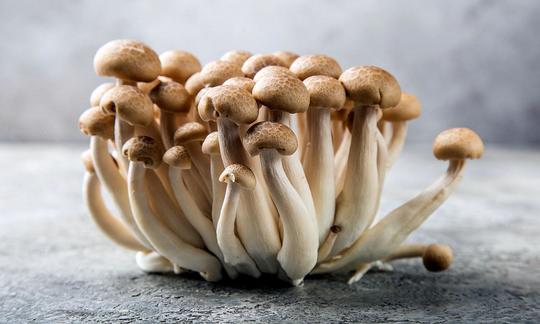

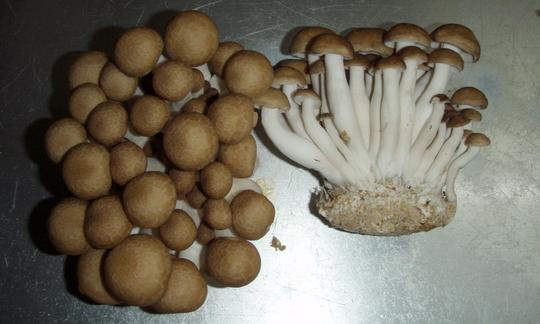

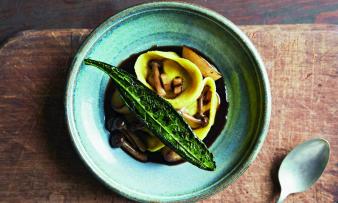
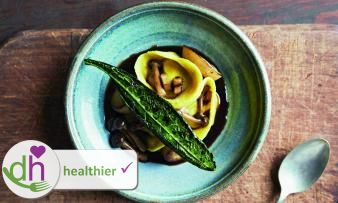

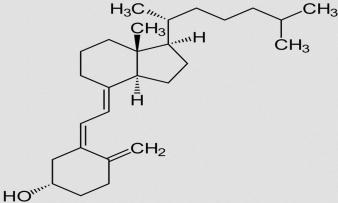



Comments